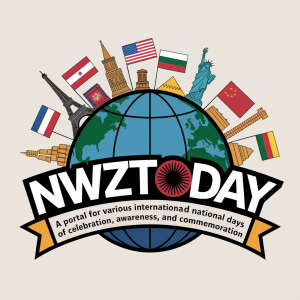Every year on March 23, we come together to celebrate World Meteorological Day, a day dedicated to raising awareness about the importance of weather, climate, and water in our daily lives. In 2025, this special day takes on even more significance as we delve into the fascinating world of meteorology and its impact on every corner of the planet.
Why Do We Celebrate World Meteorological Day?
World Meteorological Day marks the establishment of the World Meteorological Organization (WMO), which was founded on March 23, 1950. This specialized agency of the United Nations plays a critical role in tracking and understanding weather patterns, climate changes, and water resources, ensuring that countries around the world can make informed decisions for the safety and well-being of their citizens.
The day serves as a reminder of the essential role that meteorology plays in safeguarding lives and livelihoods, especially in the face of increasing natural disasters, global warming, and unpredictable weather phenomena.
A Brief Dive into History
Before the WMO was established, meteorological services operated independently in various countries, often lacking coordination and standardized methods. Recognizing the global nature of weather and its implications, the International Meteorological Organization (IMO) was set up in 1873, paving the way for the WMO decades later.
Since its inception, World Meteorological Day has been celebrated annually, with each year focusing on a unique theme that highlights pressing challenges and advancements in the field of meteorology. In 2025, the theme emphasizes “Empowering Climate Action through Meteorology”, reflecting the urgent need for a collaborative approach to tackle climate change.
How is World Meteorological Day Observed?
On this day, meteorological organizations, educational institutions, and governments worldwide organize various activities to engage the public and spread awareness. Here are some common ways the day is celebrated:
- Educational Campaigns: Workshops, seminars, and public lectures to discuss climate change, disaster preparedness, and sustainable practices.
- Exhibitions: Showcasing meteorological tools, technologies, and historical achievements in weather forecasting.
- Social Media Campaigns: Using platforms to initiate discussions and share knowledge about the importance of meteorology.
- Community Involvement: Local activities like tree planting, cleanup drives, and awareness marathons to promote environmental sustainability.
Fun Facts About Meteorology
Did you know?
- The term “meteorology” comes from the Greek word “meteoron,” meaning “things high up in the air.”
- The first weather satellite, TIROS-1, was launched in 1960, revolutionizing weather forecasting.
- Antarctica is the coldest place on Earth, with temperatures dropping as low as -128.6°F (-89.2°C).
- Clouds can weigh over a million pounds but stay afloat due to tiny water droplets and air currents!
A Call to Action
As we celebrate World Meteorological Day 2025, let us reflect on our role in preserving the planet and mitigating climate change. Take small but impactful steps like reducing energy consumption, supporting green initiatives, and spreading awareness about the importance of meteorology. Together, we can create a sustainable future for generations to come.
So mark your calendars for March 23, 2025, and join the global movement to honor the science that keeps us informed and prepared. Let’s celebrate the wonders of weather and the dedicated meteorologists who make it all possible!








